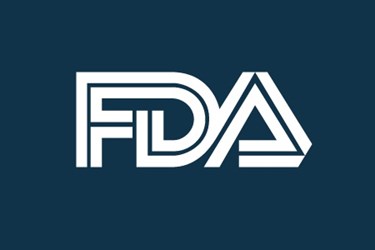FDA Releases Draft Guidance On Radiation Biodosimetry Devices, Seeks Comments
By Chuck Seegert, Ph.D.

The FDA has released a draft guidance document related to development of radiation biodosimetry devices. These instruments may be used to assess biological responses to radiation exposures occurring during natural disasters, accidents, or intentional radiation-producing events. The guidance includes recommendations on testing and validation of radiation biodosimeters and has been released to elicit comments from industry.
Radiological events may be the result of natural disaster or from intentional sources like improvised nuclear devices and other devices designed to disperse radioactive materials (dirty bombs). In a scenario like this, many thousands of people could potentially be subject to radiation exposure. Radiation biodosimeters are tools that could be used to develop a coordinated medical response by enabling assessment and triage for those who may have received high doses of radiation.
Biodosimeters are designed to be used after radiation exposure has occurred and provide a way of estimating the actual dose an individual has received, according to the draft guidance document released by the FDA. This capability allows medical personnel to assess the likelihood that a patient will develop acute radiation syndrome and then determine the best treatment plan for that individual. The new draft guidance document provides the FDA’s current thinking on study designs to establish the analytical and clinical performance of radiation biodosimeters.
With exposure to radiation, certain cellular activities can change, leading to the pathological behavior of biological systems. Problems arising can include physiological changes, chemical changes, or other changes that may be indicated by measurable biomarkers, according to the guidance document. Radiation biodosimeters are often in vitro tests designed to measure these changes and to reconstruct the actual radiation dose received by a patient. Biodosimetry tests may be designed to provide a quantitative or qualitative result that identifies a clinical decision-making cut-point. Some possible methods that can be used to test changes in radiation-related biomarkers include polymerase chain reaction (PCR) to measure changes in nucleic acids and enzyme-linked immunosorbent assays (ELISA) to study protein expression.
This guidance applies to devices intended to be used during non-therapeutic scenarios that may include accidents or deliberate attacks. It is not focused on radiation exposure that typically occurs during patient treatment or in the course of normal healthcare-related activities like those experienced by radiologic technologists. Also, it is not focused on tests of the sputum or urine that may be related to ingestion of radioactive isotopes.
The policy recommendations in the draft guidance document are divided into several sections that include:
- Benefit-Risk Analysis: This is largely focused on the effects that a false positive, or false negative has on clinical decisions.
- Device Description And Specifying The Intended Use: Each component necessary for the device’s effectiveness must be described, along with the intended use and where it falls in the treatment lifecycle for patients. This may be early on to assist in triage, or it could be used later as a tool to monitor treatment effectiveness.
- Establishing Performance Characteristics — Analytical Validation Studies: This section discusses how patient-to-patient variability may be large with respect to individual sensitivity to radiation. For a given dose, one patient may only be slightly affected, while another is severely affected. This is different than traditional dosimetry, which accurately identifies the quantity of radiation received instead of the severity of effects. Understanding these effects will allow the personalization of treatment by accounting for the biological differences between patients.
- Establishing Performance Characteristics — Animal Studies As Surrogates For Clinical Validation: A critical portion of this section addresses difficulties that are likely to be encountered with actually testing these devices in the human population. Generally there is not a large pool of available human subjects that are exposed to radiation. The FDA is aware of this and expects that data collected from relevant animal models may be substituted, but justification must be provided.
- Establishing Performance Characteristics — Clinical Validation Studies With Human Samples: While it is recognized that human clinical studies may be challenging, the agency encourages manufacturers to strive to perform relevant tests that can confirm their pre-clinical test data. For example, one population that may lend itself to clinical testing could be patients receiving total body irradiation for therapeutic purposes. Samples of different tissue types that may be affected by radiation exposure could provide a way of studying various systems that are most likely to be impacted by it.
- Labeling: Like most other medical devices, the labeling criteria is closely defined and other guidance related to labeling is referenced that may help developers label their products appropriately.
- CLIA Categorization: While some biodosimeter designs may be intended for point-of-care or field use, others may be developed for professional CLIA laboratory settings. It should be recognized by development teams that each location may have different requirements and that unique forms of testing will be needed for each.
